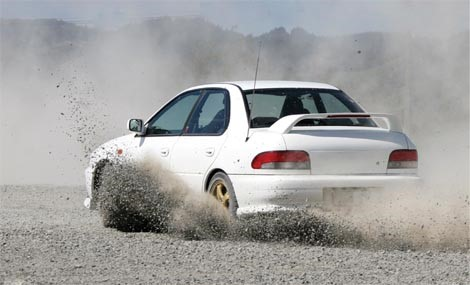




























When a car is in motion, the body coating is easily impacted by particles such as gravel and crushed stones, and its ability to resist gravel is related to the appearance, corrosion resistance, and service life of the car body. Accurately assessing this ability is crucial for improving coating quality.
MTT provides professional gravel impact testing and precise evaluation to ensure the quality of automotive coatings.

| Project Overview
During vehicle operation, the body surface coating is inevitably subjected to impacts from gravel, stones, and various other particulate matter. The resistance of the body coating to gravel impact directly affects the vehicle’s appearance, corrosion resistance, and overall service life. Therefore, accurately evaluating the gravel impact resistance of automotive body coatings is an important means of improving coating quality. Gravel impact testing is applicable to adhesion failure tests of exterior coatings, interlayer adhesion failure tests within coating systems, brittle thickness of hard glass materials, optimal coating thickness for flaking resistance, as well as flaking, collision, and abrasion resistance tests of plastics and glass.
| Instrument Features
1. The test spray gun can be freely and quickly replaced to meet the requirements of VDA and SAE standards.
2. Touchscreen settings make the testing process convenient and straightforward.
3. The flat-panel test sample holder can be set at 45°, 54°, or 90°, while irregular samples can be tested using a 3D test chamber.
4. A large-capacity compressed air reservoir ensures constant pressure and flow rate, while the pressure can be adjusted via a regulating valve at the spray gun.
| Technical Specifications
1. Equipment Dimensions (W × D × H): 1600 × 500 × 1250 mm
2. Spray Gun Types: SAE spray gun assembly, VDA spray gun assembly
3. Pressure Control System: 0–10 Bar, with an accuracy of ±0.5% of the final stabilized value
4. Gravel impact duration: 0–30 seconds (adjustable)
5. Configuration: SAE 90° impact chamber, SAE 45° impact chamber, SAE spray gun assembly, VDA 90° impact chamber, VDA 54° impact chamber, VDA spray gun assembly
6. Test temperature range: –30 ℃ to ambient temperature
| Types of Gravel
|
类型 Type |
G699水墨路沙砾(鹅卵石) G699 Ink Road Gravel (pebbles) |
VDA 621427冷硬铸铁沙砾 VDA 621427 chilled cast iron gravel |
JIS 5001#6 花岗岩石 Granite stone |
JIS 5001#7 花岗岩石 Granite stone |
|
尺寸 Dimensions |
9.5~15.9mm5 |
4~5 mm |
4.8~14.3 mm |
3.2~9.5 mm |
|
适用标准 Applicable standards |
SAE J400-02, GMW 14700, ASTM D3170, GM 9508P及福特标准 GM 9508P and Ford standards |
FLTM BI157-06 PSA D24 1312 |
NES M0141, NES M0007 |
NES M0141 NES M0007 |
| Evaluation Method (SAE Standard)
1. Test procedure based on standards: SAE J400, ASTM D3170.
2. Apply adhesive tape to the coated surface of the sample, press evenly to ensure full contact without air bubbles, and then peel it upward.
3. Repeat step 2 until the damaged coating has completely detached.
4. Accurately count and evaluate: (Grade according to Table 1 and Table 2; record failure modes according to Table 3).
|
等级 Level |
10 |
9 |
8 |
7 |
6 |
5 |
4 |
3 |
2 |
1 |
0 |
|
破坏点数 Number of failure points |
0 |
1 |
2~4 |
5~9 |
10~24 |
25~49 |
50~74 |
75~99 |
100~149 |
150~250 |
大于250 More than 250 |
|
等级 Level |
A |
B |
C |
D |
|
破坏点尺寸 Size of failure points |
小于1mm Below 1mm |
1~3 mm |
3~6 mm |
大于6mm More than 6mm |
|
符合 Conforming |
(S/P) (S/P) |
(S/P) (S/P) |
(P) (P) |
(P/T) (P/T) |
(T) |
|
失效等级 Failure grade |
基材和底漆脱落 Substrate and primer delamination |
基材和表涂脱落 Substrate and topcoat delamination |
底漆内部脱落 Internal primer delamination |
底漆和表涂脱落 Primer and topcoat delamination |
表涂内部脱落 Internal topcoat delamination |
|
失效形式 Failure mode |
附着破坏 Adhesive failure |
附着破坏 Adhesive failure |
内聚破坏 Cohesive failure |
附着破坏 Adhesive failure |
内聚破坏 Cohesive failure |